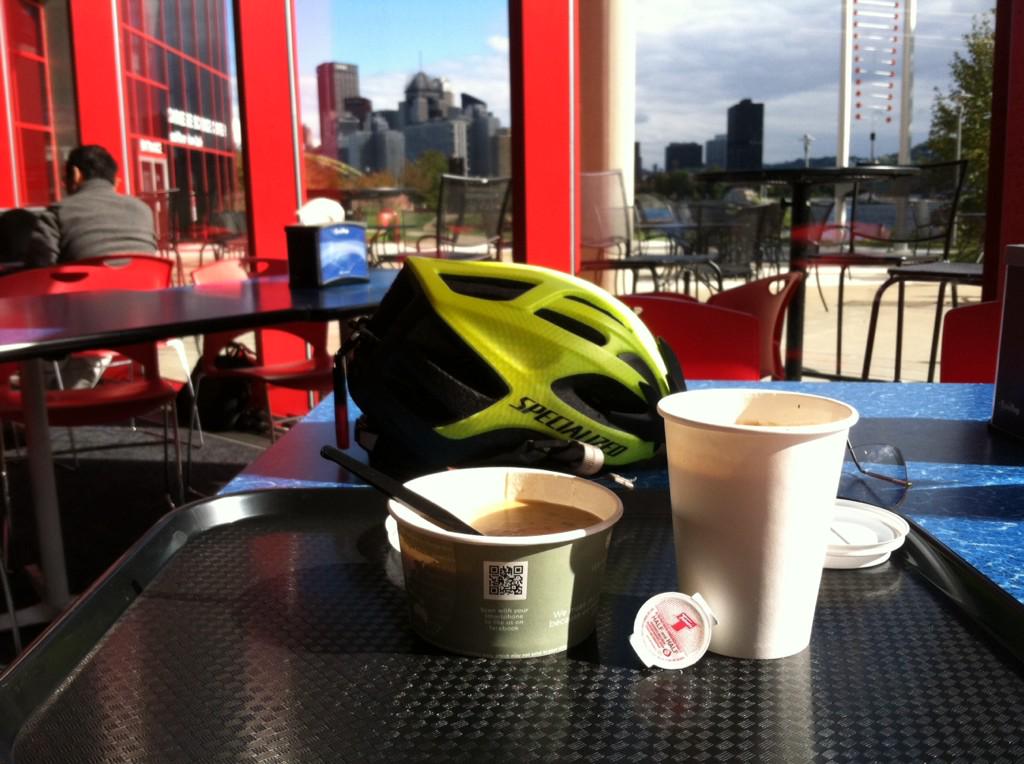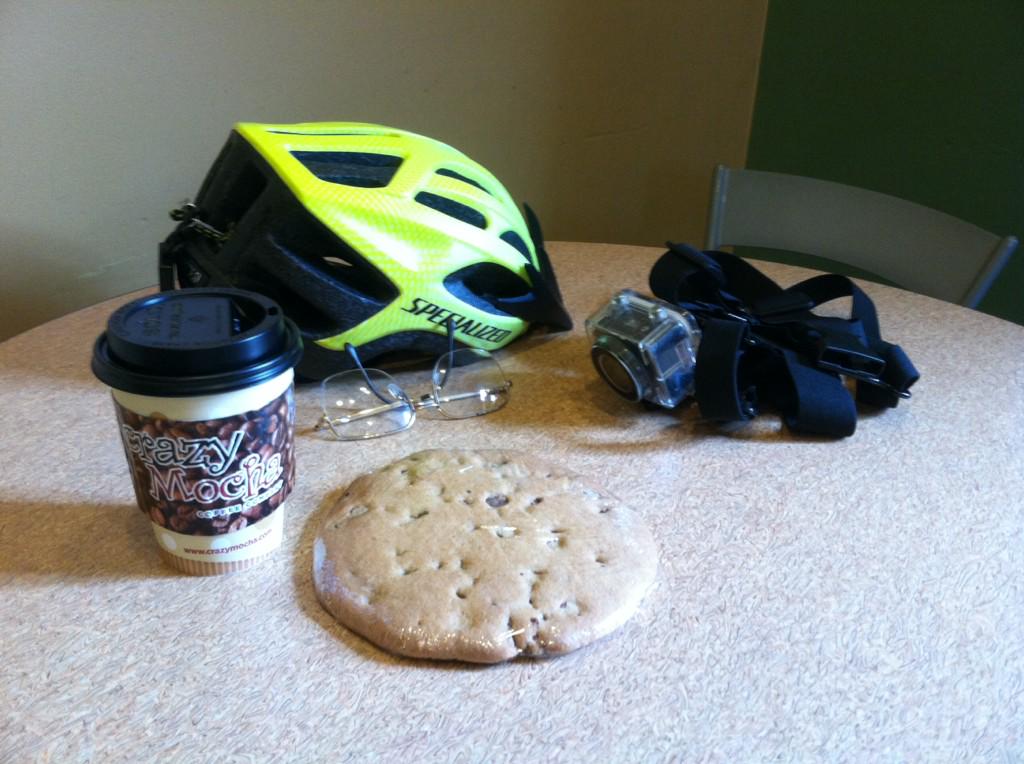What started with a Facebook post in 2012, and three years of tossing the idea around on the Bike-Pgh message board, took form at long last: a bike ride to visit some of Pittsburgh's labor history sites.
While this was taking place, some 70,000 gathered to march in Pittsburgh's Labor Day parade, one of the nation's largest, including Vice President Joe Biden. Parades are important, marching is important, but IMHO, it's also valuable to know what we evolved from.
Attending: me, Joyce, Jonathon, Paul, Jon; later joined by Yale, Ray, Geoffrey, Rich; Colleen intended to join us en route, and actually got to one of the sites before we did, but had to leave.
The weather was sunny and hot, more typical of July 4 than September 7, into the 90s by noon. For this reason alone, I might move next year's start time back to 9 instead of 10. It got hot after a couple of hours.
The plan was to start in McKees Rocks, then hit a couple of sites on the North Side, loop downtown, then visit some sites in the Strip District and Lawrenceville. From there, we could go in several directions. As it turned out, the still running parade kept us away from Downtown, and the heat and elapsed time cut the plan short at Lawrenceville.
The short version is that there is too much to see in a single ride. I don't think you can properly do it in two, even three. At Lawrenceville, we could have continue to East Liberty, or up to the Hill District, or out to Homestead and McKeesport. We didn't even consider anything south of the Mon. And as it turned out, we missed all of downtown anyway.
What we did see:
* Presston Pressed Steel Car strike site of 1909
* Discussed the 2007 Pepsi bottling works almost-strike
* Thomas Armstrong statue in West Park by the Aviary
* Cotton mill marker on the North Shore by 7th St Bridge, notable for women striking and near-rioting in the 1840s.
* Various sites commemorating the 1877 railroad strike, notably markers erected by the Howling Mob Society
For each of these sites, it is useful to know:
* What conditions led to them occurring, both immediately before and in months and years leading up to it
* What happened during the incidents, both the death/injury/destruction aspect, and the management/police/governmental handling and mishandling
* What was gained, what was lost, lasting effects good and bad
Expect that several minutes will be spent at each site, explaining the significance of the site.
People would be interested in this, if promoted some. Some effort to research access, parking, hill climbs, and availability of water, food and restrooms, would be helpful. If held on Labor Day next year, expect that the buses are running a Sunday schedule, significant if trying to get back to where a car is parked, in a reasonable amount of time, effort, and bus fare.
Ensure that the cue sheet makes sense and can be ridden by a non-expert rider. Pre-riding it with such a rider would have helped considerably.
The route we did take:
* Started at Ohio Street, Presston (Stowe, McKees Rocks Bottoms)
* Past the 1909 strike marker
* McKees Rocks Bridge upstream sidewalk
* Crossed PA65, then we split, a couple of us using the Davis Ave steps, the others riding the brick street up to the corner of California and Termon.
* California, Orchlee, Fleming, Antrim, McClure, Eckert, Beaver, Westhall, to the trail
* Three Rivers Heritage Trail to past the casino; we did not try to go past the Science Center on the trail because of large crowds for a water exhibit.
* Rode the street to past PNC Park, but in doing this, we made a wrong straight. We should have turned under the Fort Duquesne Bridge and used Scotland and Merchant Streets to get up to West Park. As it was, we were able to use sidewalks on Federal Street and South and West Commons to backtrack to West Ohio Street.
* Thomas Armstrong statue in West Park
* Arch, North, Federal, Montgomery, sidewalk by school, to CIO marker
* Through park to the corner of Cedar and East Ohio; then Cedar, Canal, Anderson, Isabella (sidewalk), ramps to trail (caution: staircase!)
* Cotton mill marker
* Up to 6th/Federal, 6th St Bridge, Penn, 13th, to former
Howling Mob Society (HMS) marker by Heinz History Center
* Smallman to 21st, by site of one
HMS marker, and near
another at Penn Ave
* Behind Terminal Building to 22nd, to Railroad Street, to 23rd St, by
existing HMS marker
* Railroad to 26th to Spring;
existing HMS marker for the roundhouse riot and fire
* Spring, 28th, across Liberty to large lot; past existing marker for 1877 strike; near site of
former HMS marker
* Back to Spring, to 31st, Penn, past former site of
HMS marker at Doughboy Square
* Butler to 39th, up 39th to Penn, existing HMS marker
The ride ended here, as we were all hot, tired, hungry, and in need of restrooms.
Just missed seeing the 1862 Allegheny Arsenal site. (As I wrote this
text, I was sitting in a coffee shop only a block away, so stopped by
for a mini-tour by myself once I left.)
One last thing: One little giggle we got while looking at the 23rd and Railroad sign was watching the tow trucks show up for the cars that parked on the live train tracks.
You sometimes have to wonder why people do such stupid things.
* * *
Having done this once, I think there is value in it, though making it more accessible, more entertaining and informative, and do-able in two hours, would be a primary goal. I am also looking for more content to include. As one example, there was an
October 1915 sweatshop fire in a Sandusky Street building that killed 13 workers; the building still stands today. There must be many other examples.



